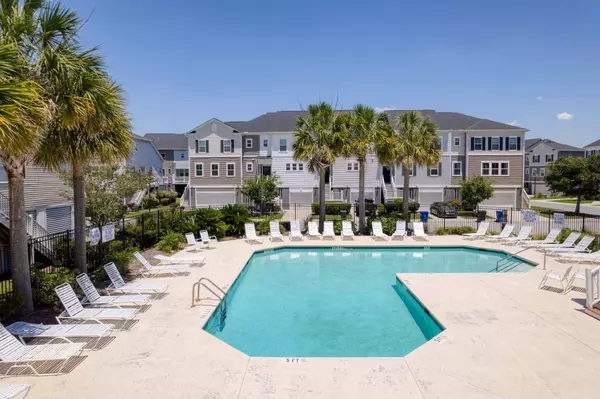Deciphering Community Living: Navigating the Differences Between HOA, Condo, and Regime Fees

Embarking on the journey of community living involves more than choosing a home; it requires understanding the nuances of various associations and fees that come with shared living spaces. Homeowners' Associations (HOA), Condominium Associations (Condo), and Regime Fees are integral components of community living. In this blog post, we'll explore the distinctions between HOA and Condo associations while shedding light on the role of regime fees in the broader context.
1. Ownership Structure:
-
HOA: Homeowners in an HOA own their individual homes and the land. The association oversees common areas to maintain community aesthetics and uphold regulations.
-
Condo: Condo residents own individual units and collectively share ownership of common areas. The association manages the upkeep of shared spaces and amenities.
2. Property Types:
-
HOA: Commonly associated with single-family homes, townhouses, and planned communities where homeowners own both the house and the land.
-
Condo: Primarily found in multi-unit buildings or townhouse-style developments where residents own their individual units but share ownership of common areas.
3. Fee Structure:
-
HOA: Homeowners pay regular dues to cover communal expenses. The fees contribute to maintaining common areas, landscaping, and shared amenities within the community.
-
Condo: Condo owners pay monthly or annual fees, known as condo fees or assessments. These fees fund the maintenance of common areas, building exteriors, and shared amenities.
4. Governance and Decision-Making:
-
HOA: Governed by a board of elected homeowners who make decisions for the community. Residents may have opportunities to provide input in community meetings.
-
Condo: Governed by a board of elected condo owners with decision-making authority. Residents may have a say in certain decisions through communication with the board.
5. Maintenance Responsibilities:
-
HOA: Homeowners are responsible for the maintenance of their individual home interiors, while the HOA oversees exterior maintenance and common areas.
-
Condo: Condo associations manage exterior maintenance, landscaping, and common areas. Owners are responsible for maintaining the interiors of their units.
6. Amenities and Shared Spaces:
-
HOA: Offers shared amenities like parks, pools, and community centers, enhancing the overall neighborhood experience.
-
Condo: Common areas often include amenities such as fitness centers, lounges, and shared outdoor spaces, fostering a cohesive living environment within the building or development.
7. Regime Fee: Understanding the Additional Element
In some communities the term "Regime Fee" is used interchangeably with HOA or Condo fees. A regime fee is essentially the same as an HOA or Condo fee—a recurring payment that contributes to the maintenance and management of common areas and amenities.
In certain community living scenarios, particularly in South Carolina, you might encounter both an HOA or Condo fee and an additional regime fee. It's important to recognize that these fees can serve distinct purposes and contribute to different aspects of community maintenance.
-
Dual Fees: In some communities, residents may pay both an HOA or Condo fee and a separate regime fee. While the HOA or Condo fee generally covers common areas, landscaping, and shared amenities, the regime fee might address specific needs or amenities exclusive to a certain section or subgroup within the community.
-
Distinct Responsibilities: The regime fee might fund the maintenance of particular amenities or services that are not covered by the broader HOA or Condo association. This could include specialized landscaping, private security services, or exclusive access to additional recreational facilities, such as a pool or gym.
-
Enhanced Amenities: Residents paying a regime fee might enjoy enhanced amenities or tailored services, creating a more personalized living experience within the larger community framework. Examples include gated sections, upgraded landscaping, or community events funded by the regime fee.
Understanding the interplay between HOA or Condo fees and regime fees is crucial for residents to grasp the full scope of community living costs and benefits. It allows for a transparent understanding of financial contributions and ensures that residents can fully appreciate and enjoy the unique offerings provided by both fee structures.
Tailoring Community Living to Your Preferences
Choosing between an HOA and a Condo association involves understanding the specific dynamics of each and considering your lifestyle preferences. The regime fee, often associated with these communities, plays a crucial role in sustaining shared spaces and amenities. As you explore the differences, align your choice with your priorities and vision for an ideal community living experience that suits your needs and enhances your overall quality of life.
Categories
- All Blogs (81)
- 1031 exchange (2)
- 2024 market (1)
- 55 and over community (1)
- activities (2)
- african american (2)
- ai (1)
- ai design (1)
- angel oak tree (2)
- antebellum (2)
- assisted living (1)
- authors (1)
- blue bottle tree (1)
- boating (2)
- books about the lowcountry (1)
- boone hall (2)
- bulls island (2)
- buyer (8)
- buying (21)
- buying a home (20)
- buying in mount pleasant (6)
- buying in the lowcountry (6)
- buying on the water (4)
- cad (1)
- canoeing (1)
- charleston (30)
- charleston county (15)
- charleston tax (2)
- chart a boat (1)
- childhood home (1)
- climate change (1)
- coastal design (1)
- coastal erosion (1)
- coastal kitchen (1)
- coffee (1)
- coffee shops in charleston (1)
- condos (1)
- culinary (1)
- cypress gardens (1)
- design (2)
- dewees island (1)
- dock (2)
- docklife (1)
- downtown charleston (1)
- drayton hall (2)
- elderly couple (1)
- estate (1)
- farmers markets (1)
- flowers (1)
- folklore (1)
- folly beach (3)
- folly river (1)
- food (1)
- forestland (1)
- Fourth of July in Charleston (1)
- garden (1)
- gardening (1)
- georgian (1)
- greater charleston (5)
- greek revival (1)
- green thumb (1)
- greenhouse (1)
- gullah (1)
- haint blue (1)
- heirs' property (1)
- high water (1)
- historic architecture (1)
- historical homes (2)
- history (1)
- hoa fees (1)
- home buying (8)
- home repair (3)
- home styles (1)
- homeowner (6)
- homeownership (6)
- homes for sale in charleston (1)
- homes for sale in james island (1)
- homes for sale in mount pleasant (1)
- homes for sale in west ashley (1)
- homestead (1)
- homestead exemption (1)
- hospitality (1)
- hostess (1)
- hosting (1)
- houses (1)
- hurricane (1)
- insulation (1)
- interior decor (3)
- interior design (2)
- interiordesign (1)
- intracoastal (3)
- investing (1)
- investment (2)
- investment property (1)
- isle of palms (3)
- italiante (1)
- james island county park (1)
- john's island (1)
- kayaking (1)
- kitchen design (2)
- kitchen layout (1)
- land in common (1)
- lighthouse (1)
- lighthouses (1)
- lowcountry (10)
- luxury (1)
- luxury real estate (1)
- magnolia plantation (2)
- marketing (2)
- marketingyourhome (1)
- marsh (1)
- mold (1)
- mold in homes (1)
- mold in the lowcountry (1)
- mold remediation (1)
- mount pleasant (5)
- moving (3)
- moving to charleston (5)
- movingoutofstate (1)
- movingtocharleston (2)
- nar (1)
- nar lawsuit (1)
- nautical (1)
- oak trees (1)
- paddleboarding (1)
- palm trees (1)
- palmetto (1)
- palmetto trees (1)
- plantation (1)
- plantations (2)
- property (1)
- property preservation (1)
- raised homes (1)
- real estate (7)
- realestate (2)
- realestatemarketing (1)
- realty (6)
- realty101 (1)
- regime fees (1)
- relocation (1)
- relocationcosts (1)
- remediation (1)
- rental (1)
- rental properties (1)
- restaurant week (1)
- restaurants (1)
- retirement (1)
- sailing (1)
- seller (3)
- selling (10)
- selling a home (3)
- selling in charleston (4)
- selling in mount pleasant (2)
- selling on the water (1)
- selling your home (5)
- sellingyourhome (1)
- senior citizen (1)
- senior citizens (1)
- senior living (1)
- shark tooth (1)
- shem creek (2)
- south (1)
- south carolina (4)
- south of broad (1)
- southern architecture (1)
- southern folklore (1)
- southern hospitality (1)
- southern lady (1)
- southern living (2)
- spanish moss (1)
- spray foam (1)
- spray foam insulation (1)
- sullivans island (2)
- sweetgrass (1)
- sweetgrass baskets (1)
- taxes (1)
- tidal (1)
- title (2)
- title insurance (1)
- tour (1)
- tour times (1)
- townhomes (1)
- useanagent (1)
- victorian (1)
- wando river (1)
- water views (1)
- waterways (2)
- whyagentsmatter (1)
- winter (1)
- winter maintenance (1)
- winter ready (1)
- winterize (1)
Recent Posts










"My job is to find and attract mastery-based agents to the office, protect the culture, and make sure everyone is happy! "

